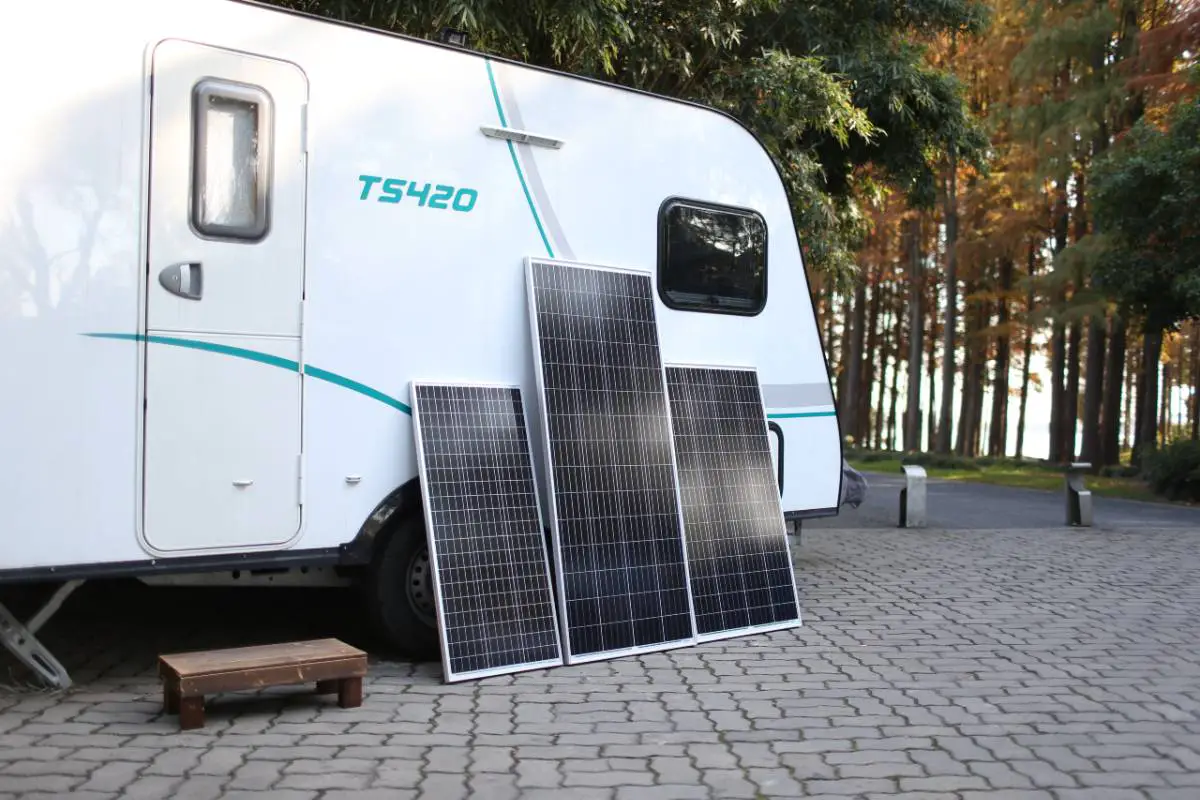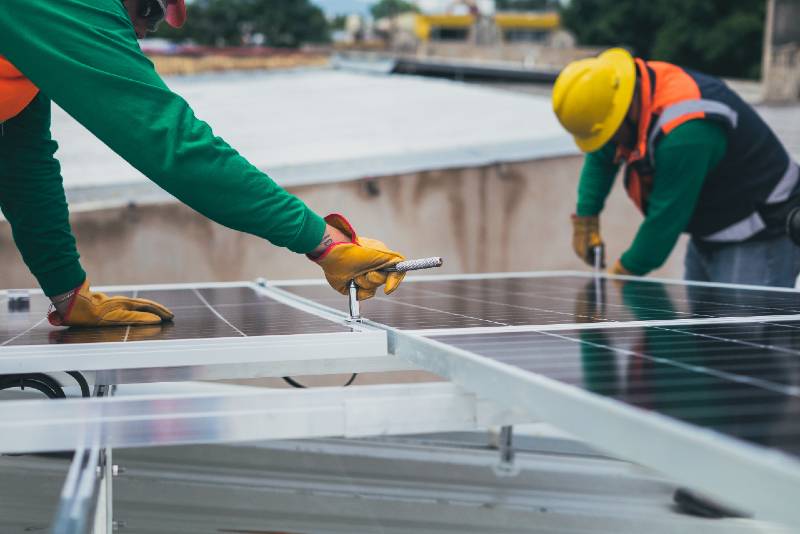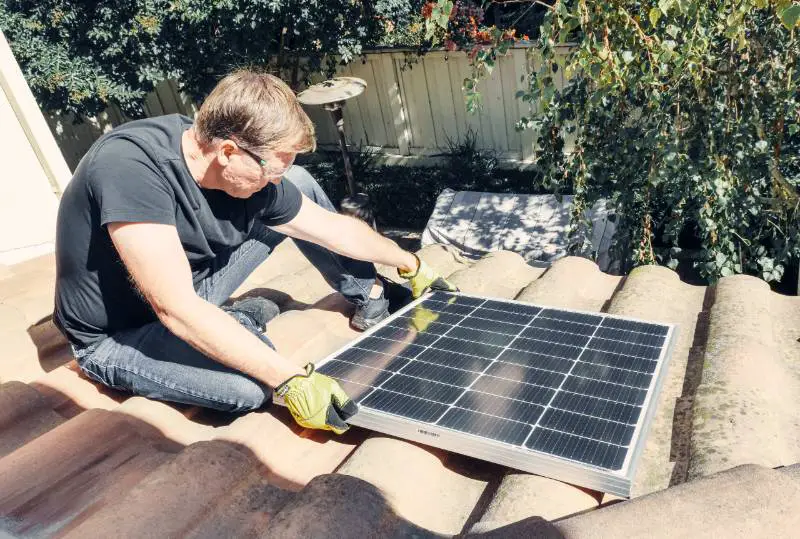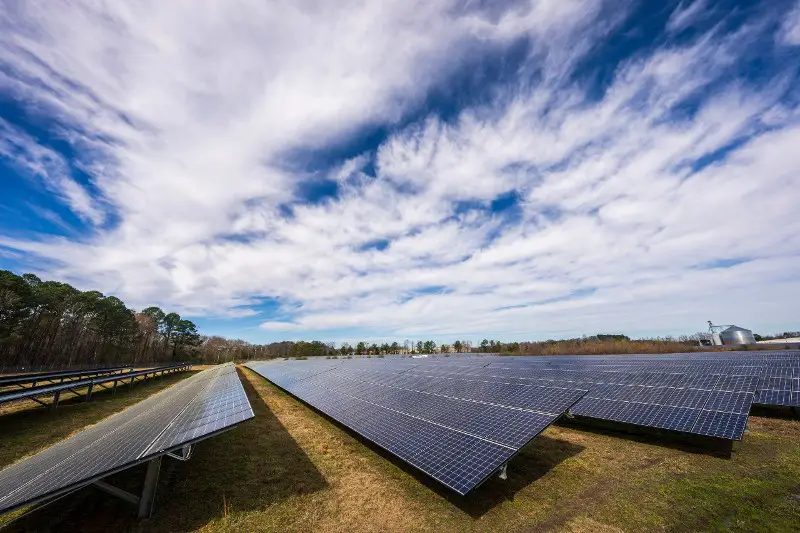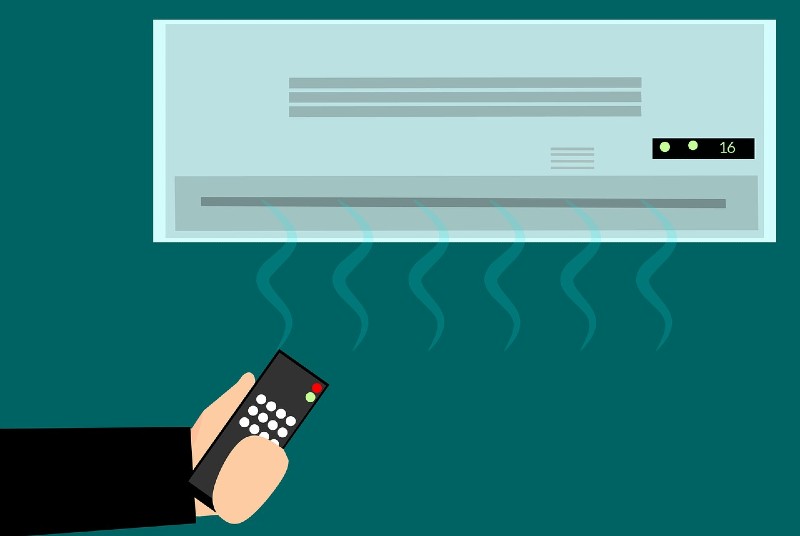In the midst of these technologies, have you ever wondered what is the difference between solar cells and photodiodes?
Both play with light, but they do very different things.
Solar cells are the big players, converting sunlight directly into electricity—think powering everything from your handheld calculator to whole neighborhoods.
Photodiodes, though, are the precise light detectives in devices, crucial when exact light measurement is needed.
In this guide, I’ll walk you through how each component works, their key differences, and why they’re so important in our tech-filled world.
What Is a Solar Cell?
A solar cell is a device that directly converts the energy of light into electrical power through a process known as the photovoltaic effect.
It takes sunlight and transforms it into electricity.
These cells are mostly made from silicon, which you can find in different forms: amorphous (a bit random and unstructured), polycrystalline (somewhat structured), and crystalline (very structured).
Each type affects how well the solar cell works and how much it costs to produce.
One of the best things about solar cells is that they don’t need any fuels or chemical reactions to work.
This sets them apart from things like batteries or fuel cells.
They also don’t have any moving parts, meaning less can break or wear out.
This lack of moving parts makes solar cells super reliable and low-maintenance.
You can also use just one solar cell for small tasks, or you can put many together to form what’s called an array.
For example, these arrays can be scaled up to form large solar farms that generate electricity on a commercial scale, powering entire neighborhoods or industrial facilities.
On a smaller scale, multiple solar cells can be combined into solar panels, commonly installed on rooftops.
What Is a Photodiode?
A photodiode is a handy little device that turns light into an electrical signal.
Think of it as a light detector that helps convert light into something we can measure and use in circuits.
At the heart of a photodiode is a PN junction, which is a special region in the semiconductor that’s very sensitive to light.
When light hits this area, it changes the electrical properties of the device.
This sensitivity makes photodiodes great for detecting light levels.
Unlike regular diodes, photodiodes are designed with a large PN junction area to capture as much light as possible.
They also have a very shallow junction depth, typically less than 1 micron, to enhance their sensitivity.
Photodiodes work with a reverse voltage, meaning the voltage is applied in the opposite direction of how current would normally flow.
In the dark, they have a tiny reverse current called the dark current, which is usually less than 0.1 microamps.
But when light hits the photodiode, photons (light particles) transfer energy to the electrons in the semiconductor, freeing them from their bonds and creating electron-hole pairs.
These pairs are known as photogenerated carriers.
These free carriers move because of the reverse voltage, increasing the reverse current significantly.
The stronger the light, the higher the reverse current, a feature called “photoconductivity.”
The current generated by the photodiode when exposed to light is known as the photocurrent.
By connecting a load to the photodiode, this photocurrent can be used to produce an electrical signal that changes with the light intensity.
Related article: How Do Solar Panels Work Step By Step?
What Are the Main Differences between a Photodiode and a Solar Cell?
1. Main Function
As I mentioned earlier, both photodiodes and solar cells turn light into electrical energy, but they do it for different reasons.
Photodiodes are like the high-tech light meters of the electronic world.
They’re very precise at measuring light, which is super important in systems where the amount of light controls what happens next.
Solar cells, on the other hand, are the powerhouses that convert sunlight into electricity on a much bigger scale.
Their main job is to grab as much sunlight as possible and turn it into power we can use.
2. Light Absorption Capabilities
Photodiodes are incredibly sensitive and can pick up the tiniest changes in light.
This is super important for jobs that need a lot of accuracies, like in fiber optic communication.
Here, photodiodes have to catch light signals and turn them into digital data that our devices can understand.
It’s kind of like being able to hear every tiny whisper in a noisy room—pretty neat, right?
On the other hand, solar cells are the workhorses when it comes to absorbing light.
They’re all about grabbing as much sunlight as they can and turning it into electricity.
Their design lets them catch a broad range of sunlight, which helps pump out a lot of power.
So, think of it this way: photodiodes are the delicate, precise listeners, while solar cells are the power producers, each built with the right features to do their jobs effectively.
3. Biasing
Photodiodes use what’s called a reverse bias voltage.
This setup is a bit like setting a trap that snaps shut super fast—it helps the photodiode detect light changes almost instantly.
By applying a reverse bias, it expands a region inside the photodiode which makes it more sensitive and quicker to react.
This is why photodiodes are awesome for applications that need quick light detection, like sending optical signals or monitoring light levels.
Solar cells, on the other hand, operate under what’s called a zero-bias condition.
They don’t need any external voltage to do their job.
Instead, they convert light directly into electricity as soon as the light hits them.
They’re designed to keep this up over long periods efficiently and reliably, producing a steady flow of power without any outside help.
4. Junction Area
A junction area is the active part of devices like photodiodes and solar cells where the conversion of light into electrical signals or energy occurs.
In photodiodes, the junction area is intentionally small.
This compactness allows them to respond incredibly quickly to changes in light—think of it as having super-fast reflexes that can catch even the subtlest flicker.
On the other hand, solar cells have a much larger junction area, designed to maximize their light-catching capability.
This larger area allows solar cells to convert more sunlight into electricity, enhancing their efficiency.
5. I-V Characteristics
The I-V curve shows us how the current (I) changes with voltage (V) across these devices, and it’s a great tool for seeing how they react under different electrical conditions.
Let’s start with photodiodes.
Their I-V characteristics are unique because they work in the third quadrant of the I-V curve when they’re reverse-biased.
In simpler terms, when they’re set up this way, photodiodes don’t power anything externally.
Instead, they generate a current that depends on how much light hits them.
On the flip side, solar cells operate in the fourth quadrant of the I-V curve.
They’re all about converting sunlight directly into electricity without any extra help (like an external bias).
The I-V curve for solar cells shows how effectively they can do this under varying levels of sunlight and electrical demands.
6. Material Choices
The materials chosen for photodiodes and solar cells determine how well they work, and it all boils down to some cool science called semiconductor physics.
Different materials have different “band gap energies,” which means they interact with light in unique ways to convert it into electrical signals.
For photodiodes, materials like silicon and germanium are top picks.
They’re good at conducting electricity and absorbing light, which is exactly what you need for detecting light quickly and accurately.
The better these materials are at these tasks, the more sensitive and responsive the photodiode is.
Solar cells, on the other hand, often use materials like silicon, cadmium telluride, and gallium arsenide.
These materials are not just good conductors; they’re also champs at soaking up sunlight.
This is key because the more efficiently a material can grab and convert solar energy, the more electricity it can churn out.
Knowing all this isn’t just technical—it’s practical.
It helps in picking the right materials for specific jobs and sparks innovation in creating new photovoltaic tech.
7. Response Time
The response time of optoelectronic components shapes how they’re used across different technologies and energy setups.
First up, photodiodes.
These devices react to light changes in a flash, which is super important for gadgets where timing is crucial, like smoke detectors or communication devices.
The secret to their speed lies in their small junction area, which lets electron-hole pairs—those tiny particles that carry the electrical charge—move super fast once they’re hit by light.
This setup allows them to create an electrical current instantly, making photodiodes a go-to choice for any application that needs to detect light changes quickly.
Now, let’s talk about solar cells.
Unlike photodiodes, solar cells are built for stamina, not speed.
They have a slower response time, but that’s intentional.
With a larger junction area, solar cells can capture more sunlight, boosting their efficiency at converting light into power over time.
This feature is perfect for situations where you need a steady and reliable power source rather than a quick burst.
Related article: Can A Solar Panel Work Without An Inverter?
What Are the Pros & Cons of Solar Cells?
Solar cells play a crucial role in optoelectronics, and understanding both their pros and cons is key to maximizing their potential in various applications.
Here’s a breakdown of the pros and cons of solar cells:
| Pros | Details | Cons | Details |
| Renewable Energy Source | Converts sunlight into electricity, reducing reliance on fossil fuels. | Weather Dependent | Efficiency is significantly affected by weather; less productive on cloudy days and inactive at night. |
| Low Operating Costs | Requires minimal maintenance, leading to low ongoing costs. | High Initial Costs | Significant upfront costs for purchasing and installation, though costs are decreasing. |
| Environmentally Friendly | Produces energy without harmful emissions, benefiting environmental conservation. | Space Requirements | Requires considerable space for effective energy generation, challenging in densely populated areas. |
| Versatile Installation | Can be installed in various locations, including remote areas without grid access. | Energy Storage Costs | Requires investment in energy storage systems like batteries for use during non-sunny periods. |
| Energy Independence | Generates power independently, enhancing security by reducing reliance on traditional power grids. | Material Use | Involves materials that may be rare or expensive; recycling and disposal can pose environmental challenges despite improvements. |
What Are the Pros & Cons of Photodiodes?
On the other side, photodiodes have their own set of advantages and disadvantages that influence their use in various applications:
| Pros | Details | Cons | Details |
| Highly Accurate Light Detection | Photodiodes are extremely precise in detecting light levels, essential in medical imaging or precision photometry. | Lower Solar Energy Conversion Efficiency | Not as efficient in converting sunlight to electrical energy, limiting their use in solar power applications. |
| Rapid Response Time | Respond quickly to light changes, crucial for optical communication systems and high-speed sensors | Needs External Biasing to Work Best | Requires external voltage for optimal performance, complicating designs in systems that value simplicity. |
| Low Noise Generation | Generate minimal electronic noise, ensuring clearer signal quality and reliability in noise-sensitive applications. | Sensitive to the Environment | Performance can be affected by environmental factors like temperature changes, requiring additional measures for stabilization. |
FAQs
What Is the Difference Between a Solar Cell and a Photo Cell?
The difference between a solar cell and a photo cell is that a solar cell generates electricity from sunlight, while a photo cell changes resistance based on light but doesn’t generate power.
What Is the Difference Between a Solar Cell and a Photoresistor?
The difference between a solar cell and a photoresistor is that a solar cell produces electricity from sunlight, while a photoresistor changes resistance with light but doesn’t generate power.
What Is the Use of Photodiode in Solar Cells?
Photodiodes are not typically used in solar cells; they are used for precise light detection in sensors, while solar cells focus on energy conversion.
Conclusion
As promised, we’ve covered the essential differences between solar cells and photodiodes, exploring how they interact with light to power.
But here’s a tip: if you’re keen on integrating renewable energy or advanced light detection in your projects or home, start small.
Experiment with a DIY solar kit or a simple photodiode circuit.
This way, you not only get practical experience but can also see firsthand how these technologies can be tailored to meet your needs.

